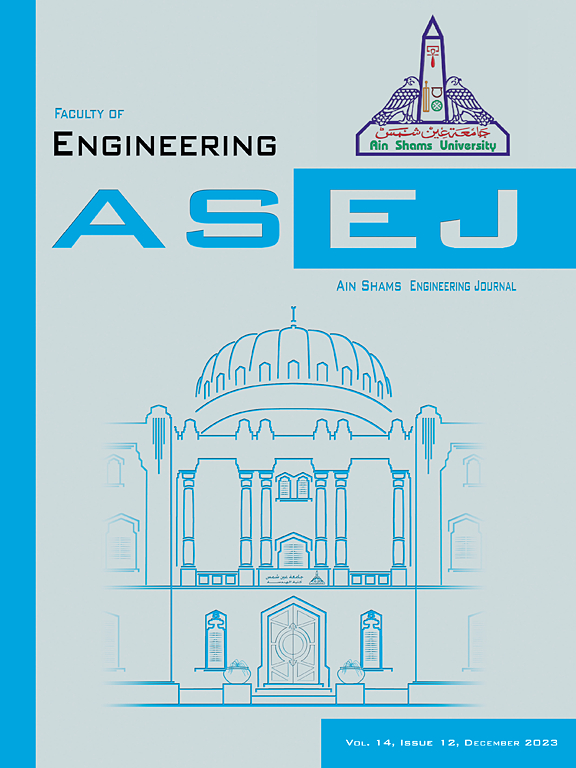Comprehensive TCAD simulation and optimization of lead-free AgBiI4 solar cells: Migration from single cell to high-performance indoor photovoltaic modules
IF 6
2区 工程技术
Q1 ENGINEERING, MULTIDISCIPLINARY
引用次数: 0
Abstract
The growing demand for sustainable power sources for IoT devices highlights the need for eco-friendly, efficient, and lead-free indoor photovoltaic (IPV) technologies, as current lead-based perovskites pose environmental and health risks. This study presents a comprehensive TCAD simulation of lead-free AgBiI4 (ABI) perovskite-based photovoltaic cells and modules optimized for indoor energy harvesting. The simulation model was initially validated through calibration against an experimental AgBiI4-based solar cell, featuring the structure ITO/SnO2/AgBiI4/PTAA/Au. Loss analysis of the calibrated cell revealed that the cell suffers from different issues, including high defects and low absorption capabilities. To address these issues, we investigated some potential routes for performance enhancement through critical parameter optimizations such as absorber thickness, carrier lifetime, and band alignment. These improvements led to a significantly enhanced ABI-based cell design under white LED illumination. Furthermore, the study extended to the design of an ABI-based mini-module, analyzing the effects of gap width, geometric fill factor (GFF), and ITO sheet resistance on module efficiency. Module efficiencies of 5.15 % and 23.58 % under 2700 K LED illumination (1000 lx) were achieved for initial and optimized designs, respectively, with a total gap width of 0.9 mm in a four-cell series configuration. This research introduces a novel approach to optimizing ABI perovskite materials for IPVs, addressing the critical need for eco-friendly and lead-free alternatives to traditional lead-based perovskite technologies. By demonstrating significant improvements in efficiency and applicability, this study establishes ABI-based solar modules as promising candidates for powering indoor IoT devices.
无铅AgBiI4太阳能电池的综合TCAD仿真与优化:从单体电池到高性能室内光伏组件的迁移
物联网设备对可持续电源的需求不断增长,凸显了对环保、高效和无铅室内光伏(IPV)技术的需求,因为目前的铅基钙钛矿构成了环境和健康风险。本研究提出了一种针对室内能量收集优化的无铅AgBiI4 (ABI)钙钛矿基光伏电池和组件的全面TCAD模拟。通过对ITO/SnO2/AgBiI4/PTAA/Au结构的AgBiI4基太阳能电池进行校准,对仿真模型进行了初步验证。对校准电池的损耗分析表明,该电池存在各种问题,包括高缺陷和低吸收能力。为了解决这些问题,我们研究了一些通过关键参数优化来提高性能的潜在途径,如吸收器厚度、载流子寿命和波段对准。这些改进显著增强了白光led照明下基于abi的电池设计。此外,该研究扩展到基于abi的迷你模块的设计,分析了间隙宽度,几何填充因子(GFF)和ITO片电阻对模块效率的影响。在2700 K LED照明(1000 lx)下,初始设计和优化设计的模块效率分别达到5.15%和23.58%,总间隙宽度为0.9 mm。本研究介绍了一种优化用于IPVs的ABI钙钛矿材料的新方法,解决了传统铅基钙钛矿技术对环保和无铅替代品的迫切需求。通过展示效率和适用性的显着改进,本研究确定了基于abi的太阳能模块是为室内物联网设备供电的有希望的候选者。
本文章由计算机程序翻译,如有差异,请以英文原文为准。
求助全文
约1分钟内获得全文
求助全文
来源期刊

Ain Shams Engineering Journal
Engineering-General Engineering
CiteScore
10.80
自引率
13.30%
发文量
441
审稿时长
49 weeks
期刊介绍:
in Shams Engineering Journal is an international journal devoted to publication of peer reviewed original high-quality research papers and review papers in both traditional topics and those of emerging science and technology. Areas of both theoretical and fundamental interest as well as those concerning industrial applications, emerging instrumental techniques and those which have some practical application to an aspect of human endeavor, such as the preservation of the environment, health, waste disposal are welcome. The overall focus is on original and rigorous scientific research results which have generic significance.
Ain Shams Engineering Journal focuses upon aspects of mechanical engineering, electrical engineering, civil engineering, chemical engineering, petroleum engineering, environmental engineering, architectural and urban planning engineering. Papers in which knowledge from other disciplines is integrated with engineering are especially welcome like nanotechnology, material sciences, and computational methods as well as applied basic sciences: engineering mathematics, physics and chemistry.
 求助内容:
求助内容: 应助结果提醒方式:
应助结果提醒方式:


